Review for Tetsuo: The Iron Man / Tetsuo II: Body Hammer
Introduction
I’ve seen Tetsuo: The Iron Man just once in my life, way back as a teenager. It was at that time in my life that my friends and I were challenging each other with extreme cinema, the sort of movies that we just couldn’t get from the mainstream, just to see how far we could push our sensibilities. I’d recently discovered anime, and was raving about Akira, and my friend told me that if I liked Akira, I’d love Tetsuo. After this much time, I’m left only with feelings and faint recollections, not helped by the fact that I watched it around two in the morning, bleary eyed and susceptible to suggestion. Tetsuo was a grossly unsettling experience, a twisted hallucinogenic ride that delivered body horror that was visceral and sensual, attractive and repulsive at the same time. I don’t remember much about the characters, or anything of the story, but those feelings have been strongly etched into my sense memory. So when the Blu-ray of Tetsuo was announced, and which also presents the sequel Tetsuo II: Body Hammer on the same disc, I found myself approaching it with a combination of dread and anticipation.
Third Window Films are giving Tetsuo: The Iron Man, and the follow up feature Tetsuo II: Body Hammer their world Blu-ray debut, with new transfers for both features supervised by director Shinya Tsukamoto. The new transfers will also see a DVD release on the same day as the Blu-ray.
Tetsuo: The Iron Man
A fetishist with a fascination for inserting metal into his body is struck and apparently killed in a hit and run incident. A salaryman starts to transform, his body slowly turning into metal, which doesn’t bode well for his girlfriend, and as the story unfolds, it becomes apparent that these two events are connected in a most sinister way.
Tetsuo II: Body Hammer
A salaryman would seem to have it all, a loving wife, an adorable son, but he winds up targeted by a mysterious group for horrific intentions. An enigmatic man, with the aid of a mad scientist and his group of devoted followers, wants to remake the world in his own image, a world where man and machine are one. But he needs an experimental test subject, a timid and non-aggressive man. They target the salaryman, kidnapping his child, and shooting him with a strange weapon. They proceed to torment him, to awaken his new power through duress, but they aren’t prepared for what this timid salaryman will be capable of.
Picture
You have to remember what you are getting here. The first Tetsuo was shot on 16mm film, and while the second is a 35mm production in colour, both movies are low budget features. Do not expect the latest hyper real sharpness as per CG Hollywood mega-budget productions. That said, director Shinya Tsukamoto has gone back to these films and supervised the new HD transfer, and there has been a degree of restoration when it comes to removing dirt and repairing print damage.
I liked what I saw a lot. Both features get 1.33:1 pillarboxed transfers at 1080p resolution, with the first film in monochrome. The image is clear and sharp for both, detail levels are good, and the film is stable throughout, with just a hint of flicker at times. A nice level of grain is constant through both of the films, with the grain stronger in the first film. There is still some print damage and a few flecks of dirt remaining, but they add to the organic feel of the films, rather than detract from them. If I do have a nitpick, it’s that the contrast could have been better in some scenes, but then I’m reminded of the source material, and realise that any further intervention would compromise the original intent. A small problem arises in Tetsuo: The Iron Man, a dead pixel from 56:35 to the start of the end credits.
The images used in this review aren’t representative of the final retail release (although screen grabs for Denchu Kozo no Boken were taken from the DVD-R supplied for review).
Sound
Audio for both features comes in the form of DTS-HD MA 2.0 Japanese with optional English subtitles. The audio is clear and without any dropouts, and brings across the unsettling sound design and effective music to excellent effect. The dialogue is clear throughout, and the subtitles are timed accurately and are free of error.
Extras
The Blu-ray disc offers both the features with scene select options, and subtitle options, all against an animated menu that presents clips from both films.
The extra features for the Tetsuo films are on a second single layer NTSC DVD disc that comes with the Blu-ray. I got a temp DVD-R version of this disc that was prone to a few glitches. The same will not be true of the finished version.
You get the original trailers for Tetsuo and Tetsuo II, and the new UK trailer for this release. It’s an obvious opportunity to compare and contrast to see just what restoration has been done.
That is spelt out explicitly in the Interview with Director Shinya Tsukamoto. As well as talking about how he’s embracing the digital age to take control of his movies, he also talks about his career and his background, the influences on the Tetsuo films, and working as an independent filmmaker, in a rewarding interview that lasts 19 minutes.
He returns to offer the background to Denchu Kozo no Boken, a 6-minute introduction to what may be the most anticipated extra on this disc.
Denchu Kozo no Boken (a.k.a. The Adventures of Electric Rod Boy) is an early Shinya Tsukamoto film, adapted from his own theatre play. It’s presented on the DVD in slightly wider than 4:3 aspect ratio, anamorphic but pillarboxed, with DD 2.0 Japanese audio, and English subtitles, and runs for 45 minutes.
It tells the story of Hikari, the eponymous Electric Rod Boy, a schoolboy with a rod sprouting from his back. Naturally that’s makes him a target for bullies, so when his friend Momo rescues him, he’s grateful enough to give her his time machine. But something goes wrong, and in a blink of an eye, Hikari winds up 25 years in the future in a dark post apocalyptic world. The Shinsengumi Vampires arrived on Earth, and turned the sky dark to make it easy for them to feast. Their plans to create eternal darkness are about to come to fruition, and it falls to Hikari to bring light back to this tormented world.
There’s a lot to appreciate about Denchu Kozo no Boken, an imaginative and engaging film, which shares much in its style and themes with Tetsuo, if a little rougher and homemade. There’s also a familiarity in its cast. Unlike the Tetsuo features, Third Window Films could only source the film on digibeta instead of the original source. Also, Denchu Kozo no Boken was shot on 8mm film in the first place. Still, Third Window Films have worked wonders in restoring this film, and while the final results don’t push the limits of the DVD format, let alone warrant a Blu-ray transfer, they are at least stable, free of excessive damage, clear, and very watchable.
Finally the disc rounds off with 8 Third Window trailers, including the forthcoming Kotoko (the recent film from Shinya Tsukamoto), and Isn’t Anyone Alive?, as well as a weblink.
Conclusion
I’ve always been in two minds about Tetsuo: The Iron Man. I’m not a fan of horror at the best of times, and body horror plays a significant part in both of these films. On the other hand, I love cyberpunk, and these films are most definitely cyberpunk. Ultimately, nostalgia colours my view of Tetsuo: The Iron Man, and I found myself reacting to the first film in much the same way as I did before, although this time I got to appreciate the allegory and depth to the film to a greater degree. It’s still the same twisted, mind bending movie that I recall, a film that offers the viewer no clues, no easy ins, it just presents its breathtaking imagery and its veiled narrative and demands that you embrace it.
It’s ambiguous, hard to fathom, tenuous and ever shifting, and once again I was taken with its sexy repulsiveness. The film may be monochrome, but the imagery and direction infuses it with colours, sounds, scents even. It is film made art, celluloid induced synaesthesia that evokes feelings and emotions, provokes thought, inspires ideas, and makes you question your very perceptions, as you take in, what is on the surface a very straightforward and simple story.
As I was watching the sequel, Body Hammer for the first time, there’s no nostalgia here to colour my perceptions. When I say that I find it the lesser of the two films, there is no doubt a twenty year filter that shapes my view. While I wasn’t expecting the first film over again, I couldn’t help but compare the two, and ironically it’s for the most unfair of reasons. Body Hammer is by far the more accessible of the two films. Its narrative is more conventional; it develops its characters, sets about establishing back story and motivation, and gives the viewer something of an easier ride. Its colour palette is put to excellent use, and the film has a warmth and vibrancy that appeals.
It also gets something of a budget upgrade, which is immediately apparent on screen in terms of production values, make up and effects. Ironically this is what hurts the film most, as it’s very much of its time, as opposed to the timelessness of the first film. Body Hammer is certainly a product of the late eighties, in terms of its visual aesthetic and style. Far from unsettling and unnerving, its effects are rather twee now (no doubt because of the 35mm colour film offering greater clarity and opportunity to criticise). When the salaryman undergoes his complete transformation in Body Hammer, I thought he’d escaped from a New Order music video. Yet even after all this time, the effects in Iron Man still creep me out. And while both films have their inspirations, and influences, it isn’t something I consider during the first film, but watching Body Hammer I was put in mind of films like Terminator and Robocop, as well as Akira, Genocyber, Guyver, and half a dozen body-horror anime I have seen over the years.
I’m sure it comes down to me watching Body Hammer for the first time now, rather than twenty years ago, but I really do prefer The Iron Man for the effect that it still has upon me. Regardless of which film you prefer, Third Window Films has done a stellar job in presenting both of them in a way that makes the best use of modern high definition display equipment. It’s the next best thing to seeing them in a cinema. And for me, the set is worth it for the first Tetsuo feature alone. Getting the rarely seen Denchu Kozo no Boken on disc is a wonderful bonus as well.
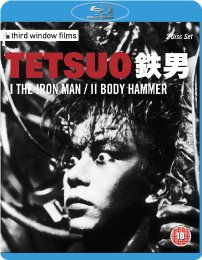

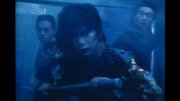


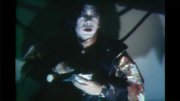
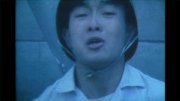
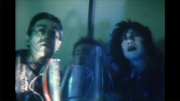
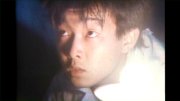

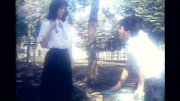
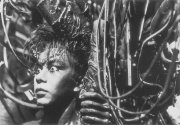

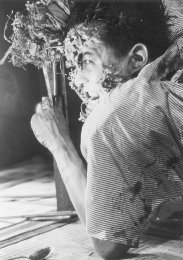
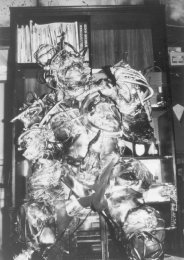

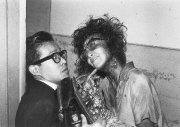









































Your Opinions and Comments
Be the first to post a comment!